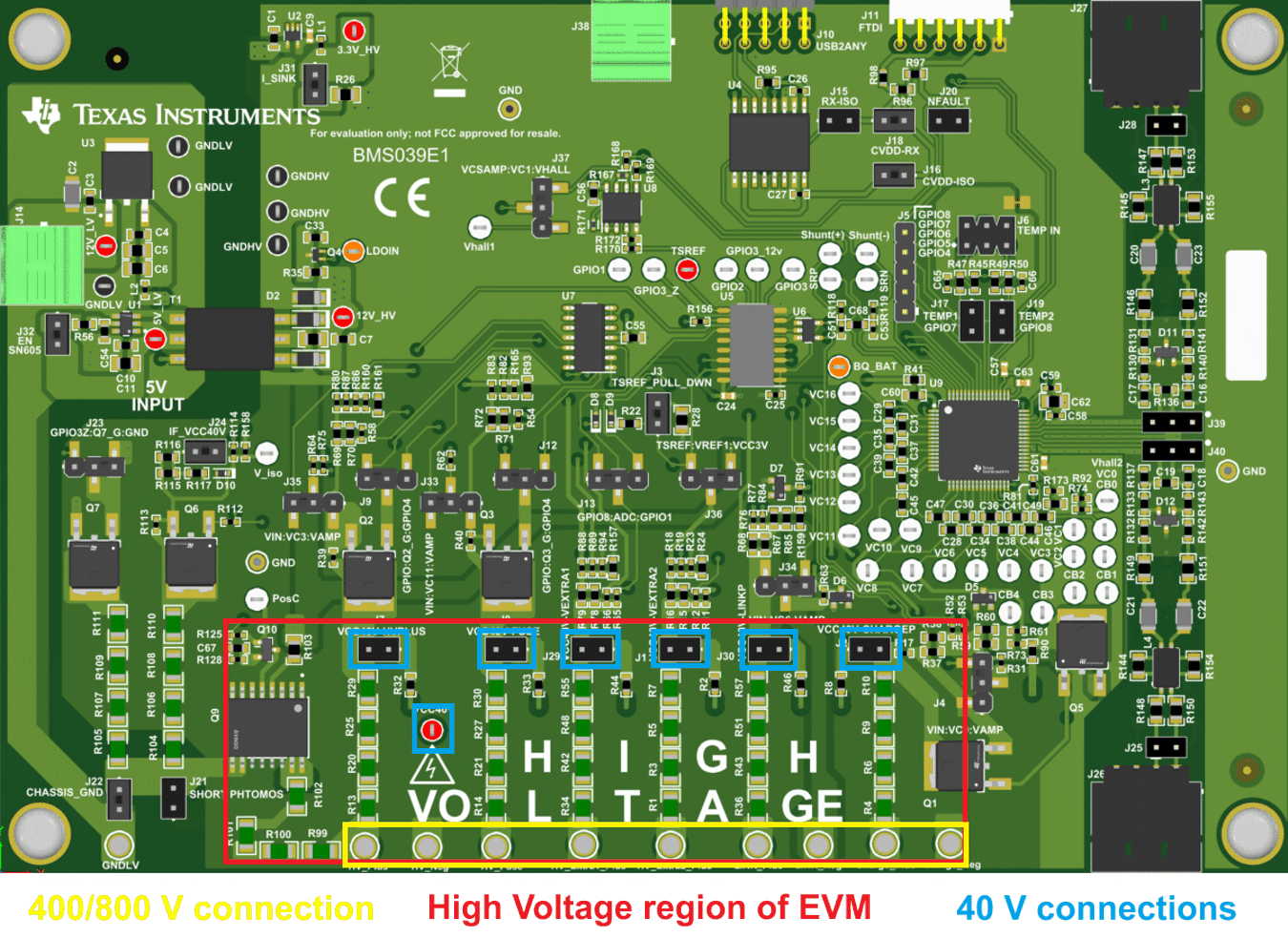SLUUCC3 february 2021 BQ79631-Q1
- 1
- Abstract
- Trademarks
- General Texas Instruments High Voltage Evaluation (TI HV EVM) User Safety Guidelines
- 1General Description
- 2Theory of Operation
- 3Connectors
- 4Quick Start Guide
- 5Physical Dimensions
- 6BQ79631-Q1 EVM Schematic, Assembly, Layout, and BOM
3.3.1 High Voltage Safety Considerations
When connecting to any of the high voltage networks, TI recommends that extreme safety precautions are taken. The user must assume the entire board is live with high voltage once an HV connection is made. The high voltage connection points and the areas on the EVM where these voltages are dissipated are shown in the figure below. Extra care must be taken around this area of the EVM.
 Figure 3-3 High Voltage
Connections
Figure 3-3 High Voltage
Connections